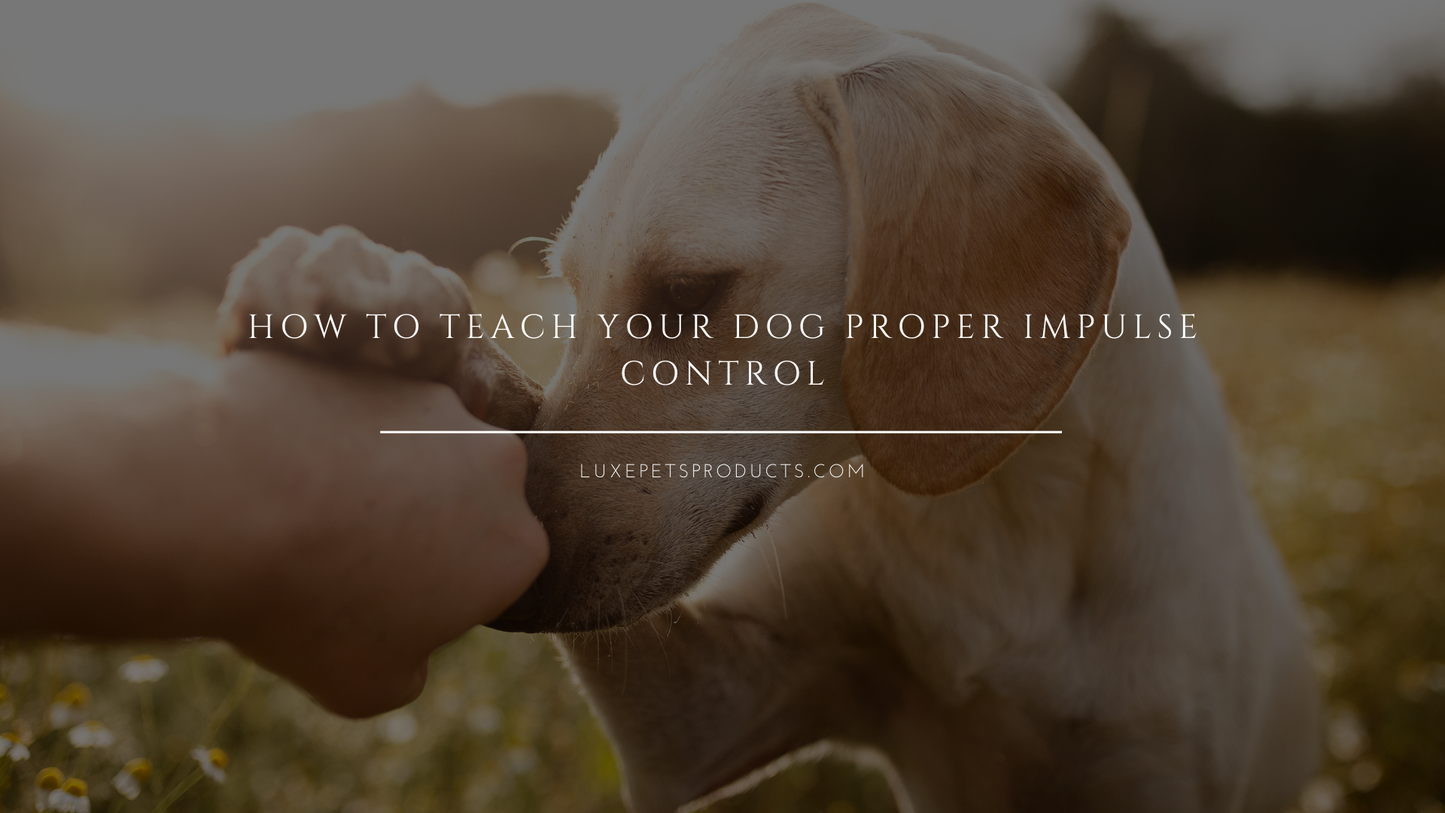
Trying to keep your dog's attention is something that we, pet parents, have struggled to work with. Working on their focus is something that can be improved upon. Teaching them impulse control is an essential part of teaching them good dog behavior.
What is Impulse Control in Dogs
Impulse control in dogs is their ability to resist urges and impulses. If you've ever watched a dog show or competition and wondered how these dogs can concentrate on what they are doing even if there are a lot of barking dogs on the sideline - this is what impulse control is all about.
Lack of impulse control leads to dogs doing things without thinking about the consequences. If your dog rushes through the door when you open it, jumps all over your gets, rushes over every squirrel they see then they lack impulse control.
The Importance of Impulse Control
Teaching your dog to control its impulses results in a calmer and more relaxed pet. They will be able to stay calm in exciting or stimulating a situation and be patient even when presented with something they strongly desire. Impulse control is useful in your day-to-day life with your pet and can be also crucial for their safety. They won't immediately run out the door when you open it, instead you control that impulse by teaching them to sit and wait for the command to go out.
How to Teach Your Dog Impulse Control
Dogs aren't born with good manners and just like everything, they have to be taught. With training and consistency, you'll be able to improve your dog's impulse control.
Teaching impulse control is easy, especially when you start them while they are young.
Start with Attainable Goals
Imagining taking your pet out for a walk. The moment you open the gate, we bet that your dog will get interested in anything but you. For most of us pet parents, getting them to focus and being attentive while surrounded by the chaos is not easy, but it's attainable. But I know that it is not easy and it takes a lot of hard work.
Sit and Wait
This method is one of the most common, yet effective impulse control training as your dog learns to sit and wait for your next command. You can reinforce your training by rewarding them when they stay sitting, even in the face of increasing distractions.
Leave It
This type of training is very powerful as it involves having your pet turn away from something that he is interested in and make eye contact with you instead.
Place the treat on the floor with your hand over it. Let them try to get the treat. As soon as they stop trying, reward them but do not use the treat on the floor. Make the reward of a higher value (e.g their favorite treat) to emphasize that leaving certain things alone can lead to better things.
When your dog is leaving the covered treat alone, you can start removing your hand. Be ready to cover it again if they come back to take it. The goal is for them to ignore the covered treat. Reward them with their favorite treat when they look away, lean back, or show disinterest in the covered food.
If your dog is automatically leaving the food alone when you drop it on the floor, then they've understood the concept and taught them to impulse control. After many repetitions, your dog should understand the meaning of your command.
